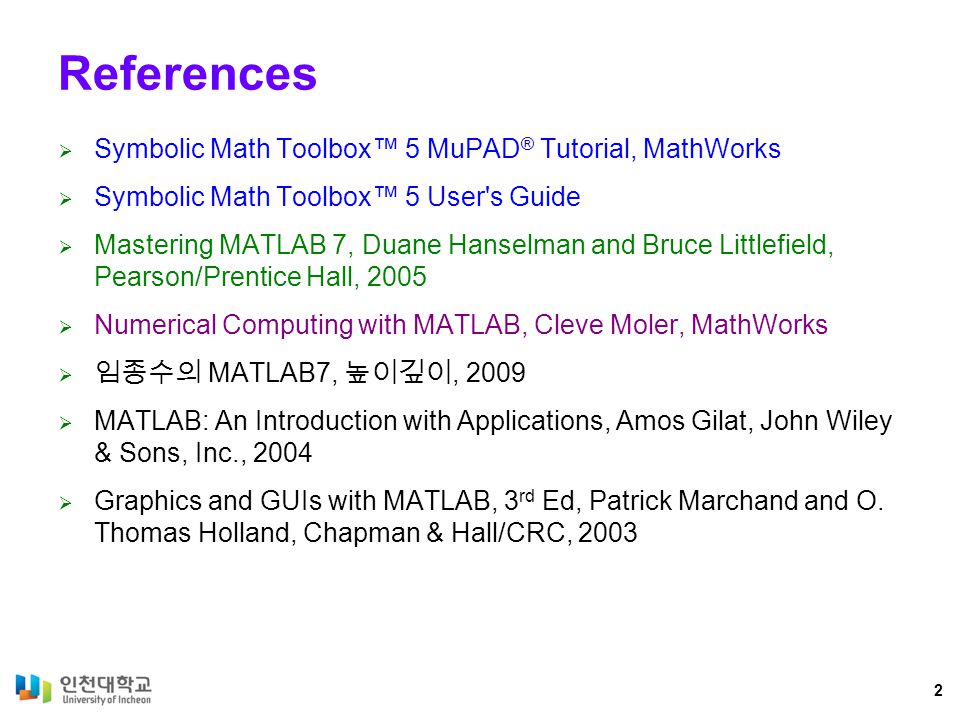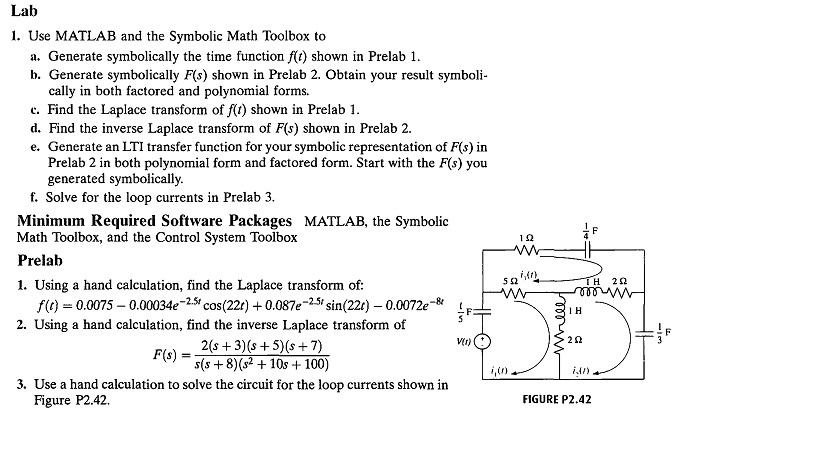

In the literature, people often use the term “fractional order (FO) calculus”, or “fractional order dynamic system” where “fractional” actually means “noninteger” (Oldham, 1974 Petras, 2006 Podlubny, 1999 Tavazoei et al., 2008 Zhao & Xue, 2008). Letter to L’Hospital over three hundred years ago and the earliest more or less systematic studies have been made in the beginning and middle of the 19th century by Liouville, Riemann and Holmgren. For example, Leibniz mentioned this concept in aĮngineering Education and Research Using MATLAB Extending derivatives and integrals from integer orders to non-integer orders has a firm and long standing theoretical foundation.

2007 Kilbas et al., 2006 Monje et al., 2010 Nonnenmacher & Metzler, 2000 Sheu LongJye et al. Many originally considered systems with lumped and/or distributed parameters can be more exactly described by fractional order systems (Dorčák et al. Fractional calculus 2.1 Fundamentals The recent increased interest in the study of dynamic systems of non-integer orders (Baleanu et al., 2010, Caponeto et al., 2010, Das, 2008) stems from the premise that most of the processes associated with complex systems have non-local dynamics involving longmemory in time, and that fractional integral and fractional derivative operators share some of those characteristics. Brief summary and conclusions follow in Section 4.Ģ.

In Section 3 we briefly present fundamental issues of the fractional order circuits in relation to nonlinear dynamical phenomena together with its fractional-order vector space representation - a generalization of the state space concept – and the modified Chua’s circuit of fractional order as an example. The next section provides a brief review of fractional calculus followed by useful approximations for these fractional operators (Section 2). Systematic methods and MATLAB-based computer routines are given. The purpose of this chapter is to introduce the fractional calculus and its applications to solutions of fractional order circuits. Among other, the need to numerically compute the fractional order derivatives and integrals arises frequently in many fields, especially in electronics, telecommunications, automatic control and digital signal processing. While the theoretical and practical interest of these fractional order operators is nowadays well established, its applicability to science and engineering can be considered as an emerging topic. It is accepted today as a new tool that extends the descriptive power of the conventional calculus, supporting mathematical models that, in many cases, describe more accurately the dynamic response of actual systems in various applications. Introduction In the last two decades, integral and differential calculus of an arbitrary (or fractional) order has become a subject of great interest in different areas of physics, biology, economics and other sciences. Warsaw University of Ecology and Management Poland 1.

The user has requested enhancement of the downloaded file.ġ9 Matlab Solutions of Chaotic Fractional Order Circuits Trzaska Zdzislaw W. Matlab Solutions of Chaotic Fractional Order Circuits Chapter ġ author: Zdzislaw Trzaska Wyższa Szkoła Ekologii i Zarządzania w Warszawie 66 PUBLICATIONS 304 CITATIONS SEE PROFILEĪll content following this page was uploaded by Zdzislaw Trzaska on 23 October 2014. See discussions, stats, and author profiles for this publication at:


 0 kommentar(er)
0 kommentar(er)
